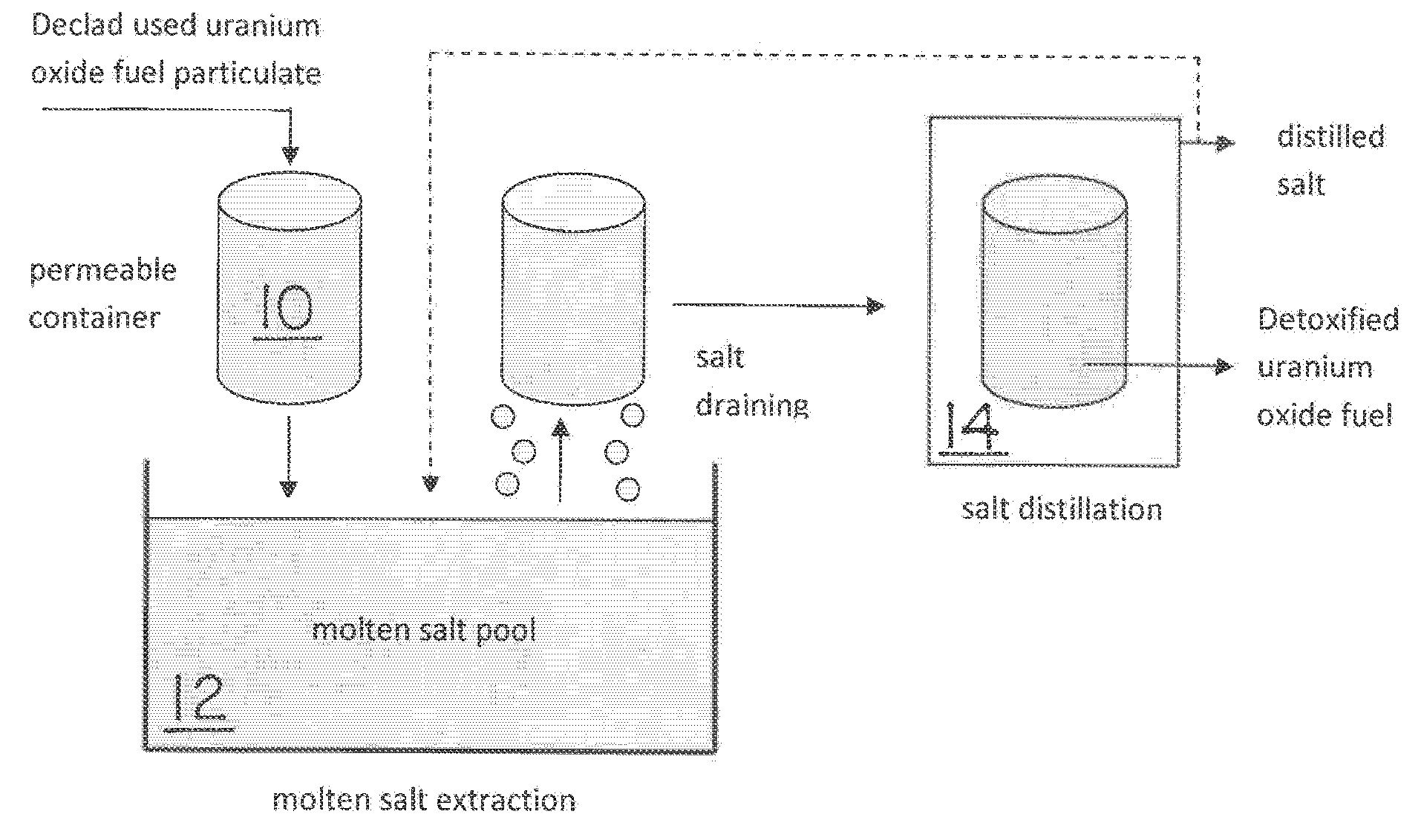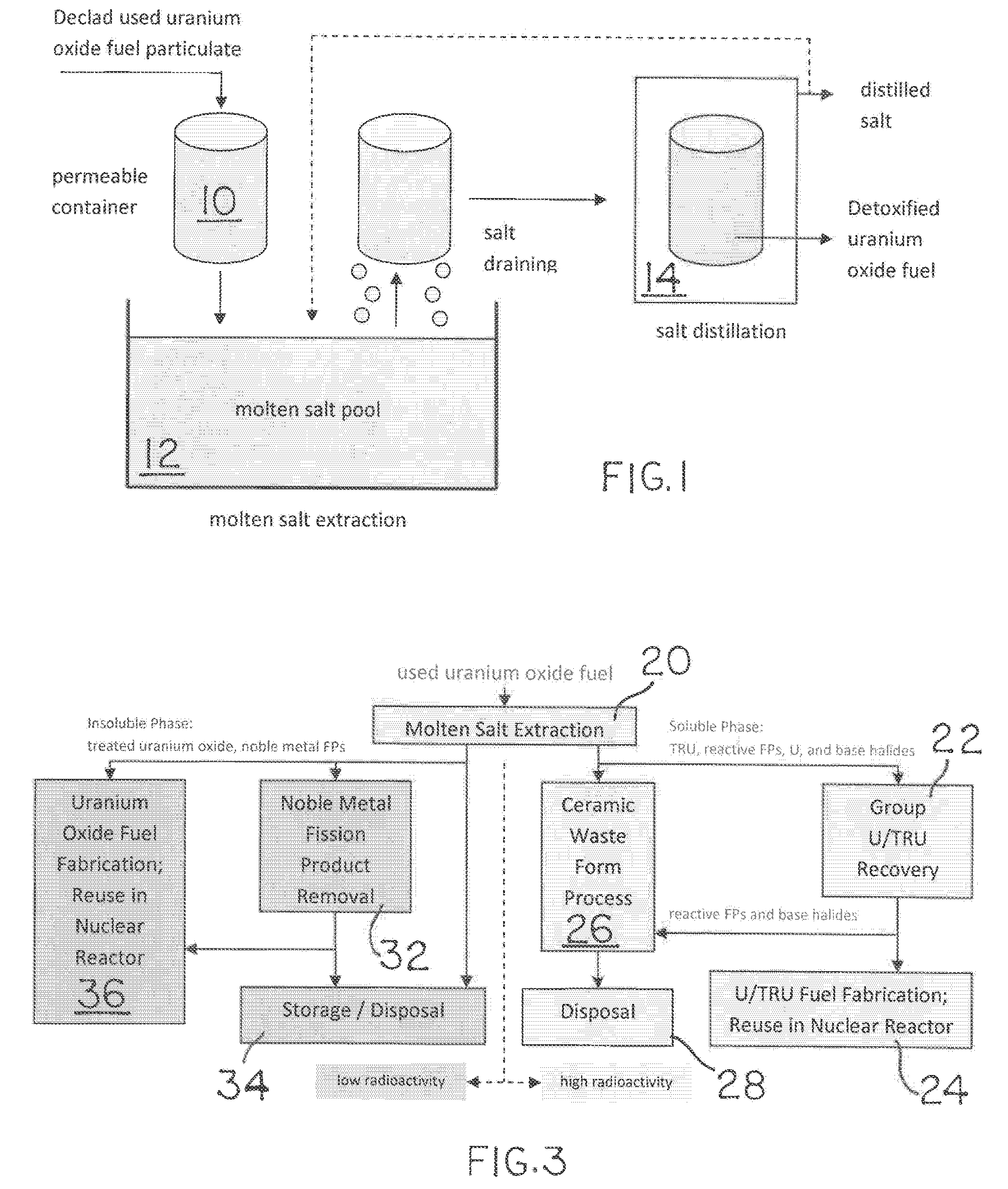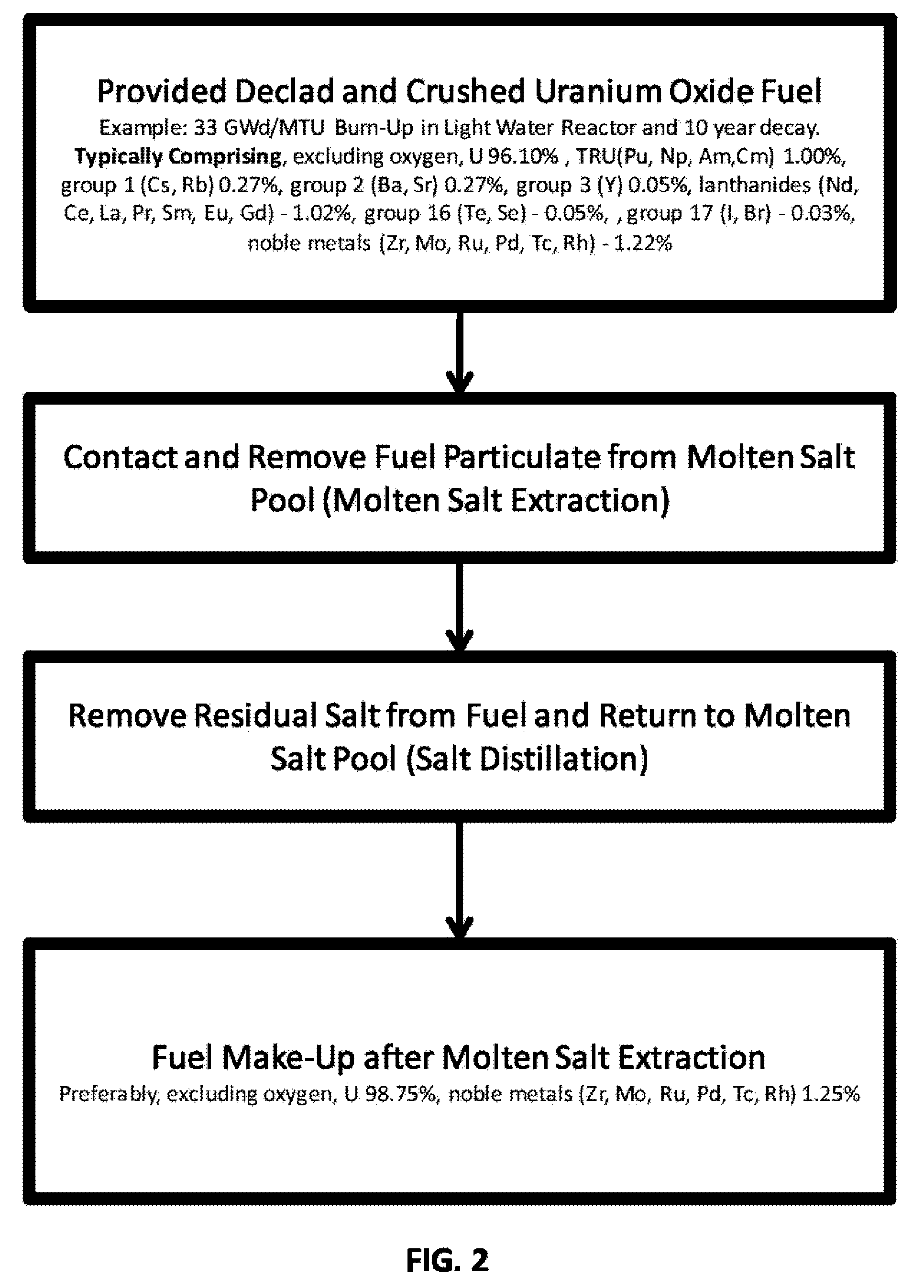Molten salt extraction of transuranic and reactive fission products from used uranium oxide fuel
a technology of reactive fission and transuranic oxide, which is applied in the field of nuclear reactors, can solve the problems that the technology of large-scale use of used uranium oxide fuel has not yet been deployed, and achieves the effects of reducing the risk of contamination
- Summary
- Abstract
- Description
- Claims
- Application Information
AI Technical Summary
Benefits of technology
Problems solved by technology
Method used
Image
Examples
Embodiment Construction
[0013]By contacting declad, i.e., the cladding which contains the uranium oxide fuel in an operating nuclear reactor and which has been separated from the uranium oxide fuel after removal from the reactor, and crushed used uranium oxide fuel with a molten halide salt containing a minor, or small, fraction of the respective uranium trihalide, e.g., LiCl—KCl—UCl3 at 500° C., transuranic and reactive fission products partition from the fuel to the molten salt phase, while uranium oxide and non-reactive, noble metal fission products remain in an insoluble solid phase. The salt is then separated from the fuel via draining and distillation, after which the recovered salt may be returned to the molten salt pool for subsequent extractions.
[0014]A simplified flow diagram of this molten salt extraction technique, including salt draining and distillation, is shown in FIG. 1. A simplified diagram of this molten salt extraction technique as applied to a typical used uranium oxide fuel, i.e., fro...
PUM
| Property | Measurement | Unit |
|---|---|---|
| electric potential | aaaaa | aaaaa |
| temperature | aaaaa | aaaaa |
| pressure | aaaaa | aaaaa |
Abstract
Description
Claims
Application Information
 Login to View More
Login to View More - R&D
- Intellectual Property
- Life Sciences
- Materials
- Tech Scout
- Unparalleled Data Quality
- Higher Quality Content
- 60% Fewer Hallucinations
Browse by: Latest US Patents, China's latest patents, Technical Efficacy Thesaurus, Application Domain, Technology Topic, Popular Technical Reports.
© 2025 PatSnap. All rights reserved.Legal|Privacy policy|Modern Slavery Act Transparency Statement|Sitemap|About US| Contact US: help@patsnap.com



